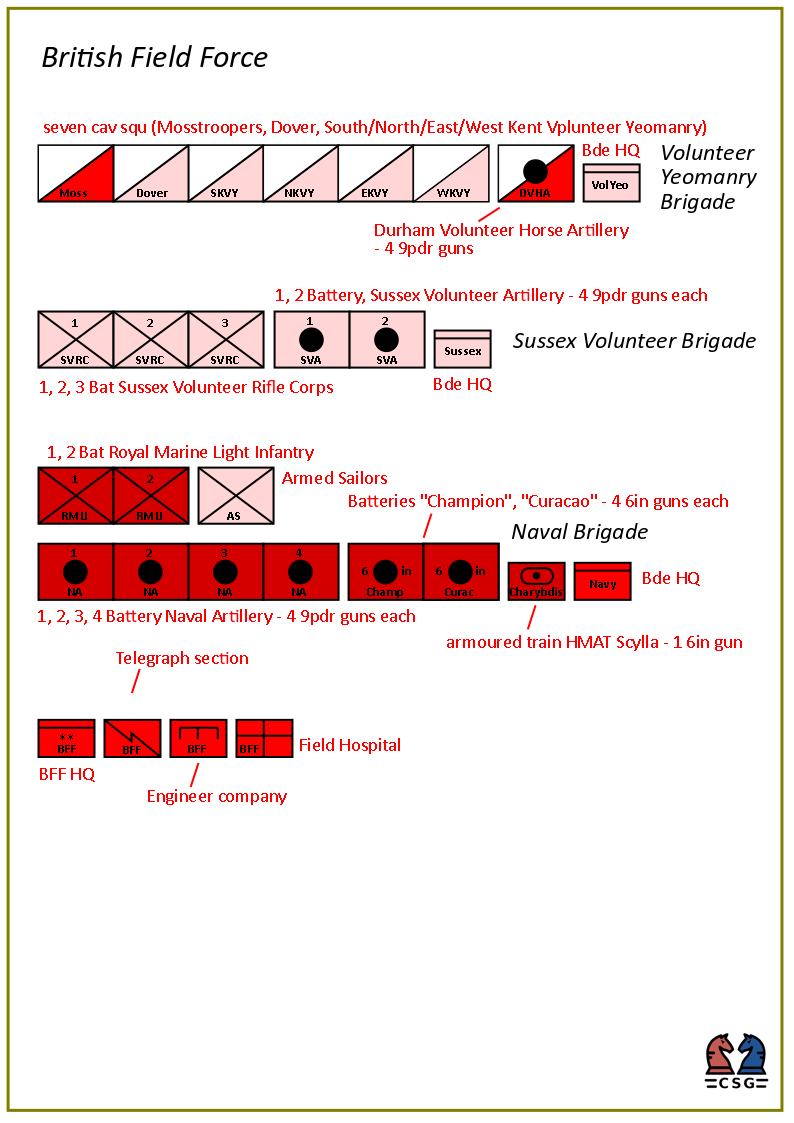
Tokens for Sussex Sorrows.
by Jorit Wintjes
At long last further some additional information on running Sussex Sorrows, Conflict Simulation Group’s Meckel Kriegsspiel. Obviously, running Sussex Sorrows involves the use of the rules, published as vol 1 in the Occasional Papers Series; the rules are meant as an aid to the facilitators when running the game. Notes on how to set up a facilitating team can be found elsewhere in this blog.
In addition to the rules, good maps, preferrably period ones, should be used, at a scale of about 1/20,000 to 1/25,000. The Conflict Simulation Group usually uses OS One Inch maps, new series, outline edition, which were produced during the last quarter of the 19th c. and are thus contemporary to the scenarios for which Susses Sorrows was originally developed. The best way to access these maps is through the National Library of Scotland, where images of these maps can be found:
https://maps.nls.uk/os/one-inch-engraved-england-wales/
Finally, tokens are needed representing forces. It is important to bear in mind that for running Sussex Sorrows, two sets of tokens are requires - the facilitators use a full set of red and blue tokens, while the participants require one set of their own forces. Design and specific nature of these tokens is really up to personal preference; indeed, Sussex Sorrows could be run by simply writing on the maps, or one might even small-scale miniatures. As the Prussian Kriegsspiel traditionally uses tokens, however, so does the Conflict Simulation Group.
Two sample sheet can be found below (these are designed to be printed on A4 sheets), providing sufficent tokens for a French division reinforced by a cavalry regiment and a British division-type formation consisting of a naval brigade, a volunteer brigade and a volunteer cavalry brigade.
The French division, in this case 7e Division d’Infanterie, has two infantry brigades on strenth with six regular batallions each; in addition, the first infantry brigade has an experienced batallion chasseur à pied on strength. The divisional artillery consists of four batteries of six 90mm De Bange field guns each, and an experienced cavalry regiment is attached to the division to provide a reconnaissance element. There are individual tokens for the brigade HQs and the division HQ, a telegraph section, a company of engineers and a field hospital.

The British field force also has tokens for division and brigade HQs, a telegraph section, a company of engineers and a field hospital. Its main elements are a Volunteer Yeomanry Brigade with six volunteer squadrons of cavalry and one regular squadron on strength, supported by a battery of horse artillery with four 9pdr field guns on strength; a volunteer brigade with three volunteer infantry batallions and two volunteer artillery batteries of four 9pdr field guns each; and a naval brigade with two batallions experienced Royal Light Marine Infantry, a batallion of armed sailors, four experienced batteries of four 9pdr field guns each and two heavy batteries of four 6in guns each on strength; in addition, the Naval Brigade has an armoured train with a 6in gun at its disposal.

The tokens used by the Conflict Simulation Group are colour-coded, with the colour itself indicating to which army the unit belongs (in this case blue = French, red = British), and different shades indicating different troop qualities (see “Sussex Sorrows”, pp. 18-19), with light red/blue indicating volunteer troops, red/blue indicating regular troops and dark red/blue indicating experienced troops. Any other way of marking troop quality is of course possible as well.
Obviously, the easiest way to produce tokens is by simply printing them onto cardstock. The Conflict Simulation Group uses slightly more substantial tokens produced by printing token sheets on labels and sticking them onto laser-cut MDF bases; these can obtained from most wargames suppliers, Warbases being CoSimG’s supplier of choice for more than a decade.